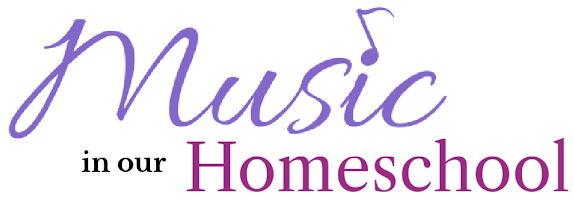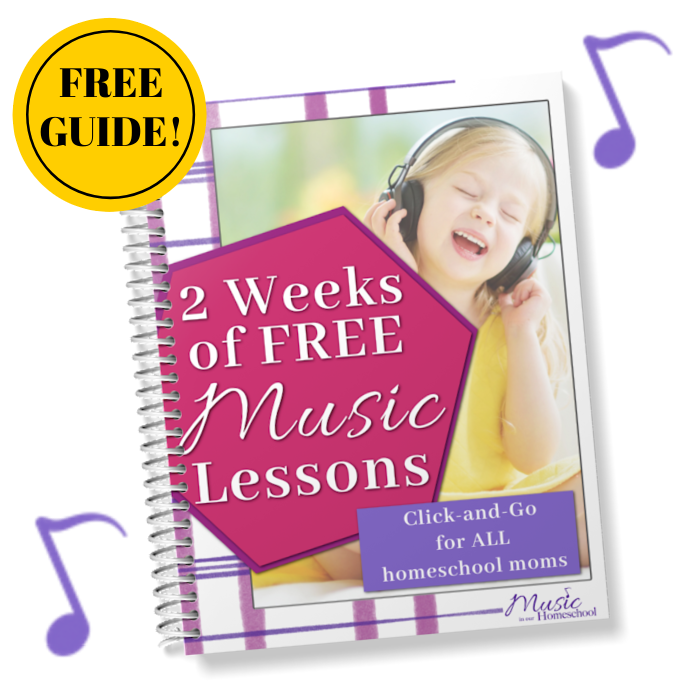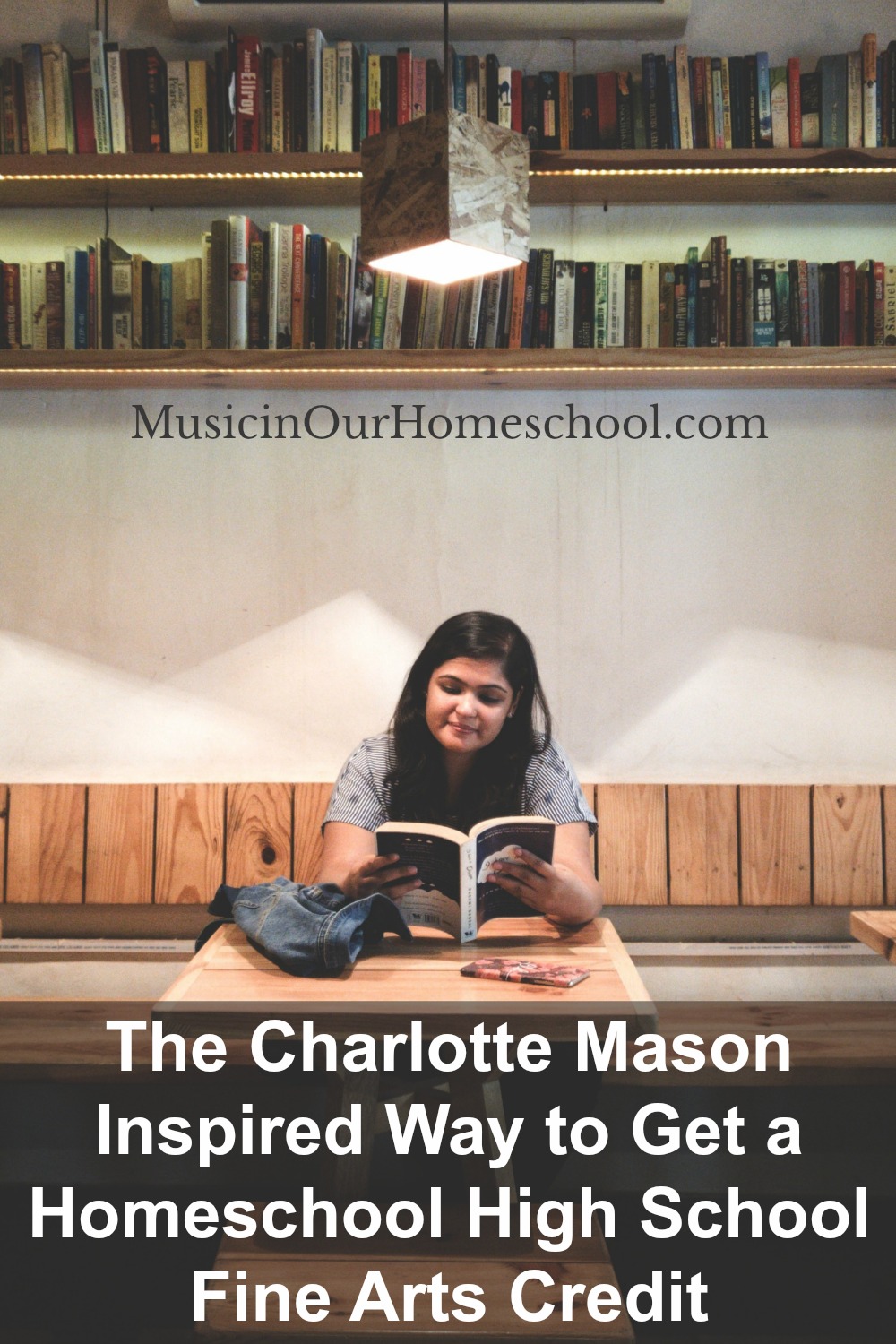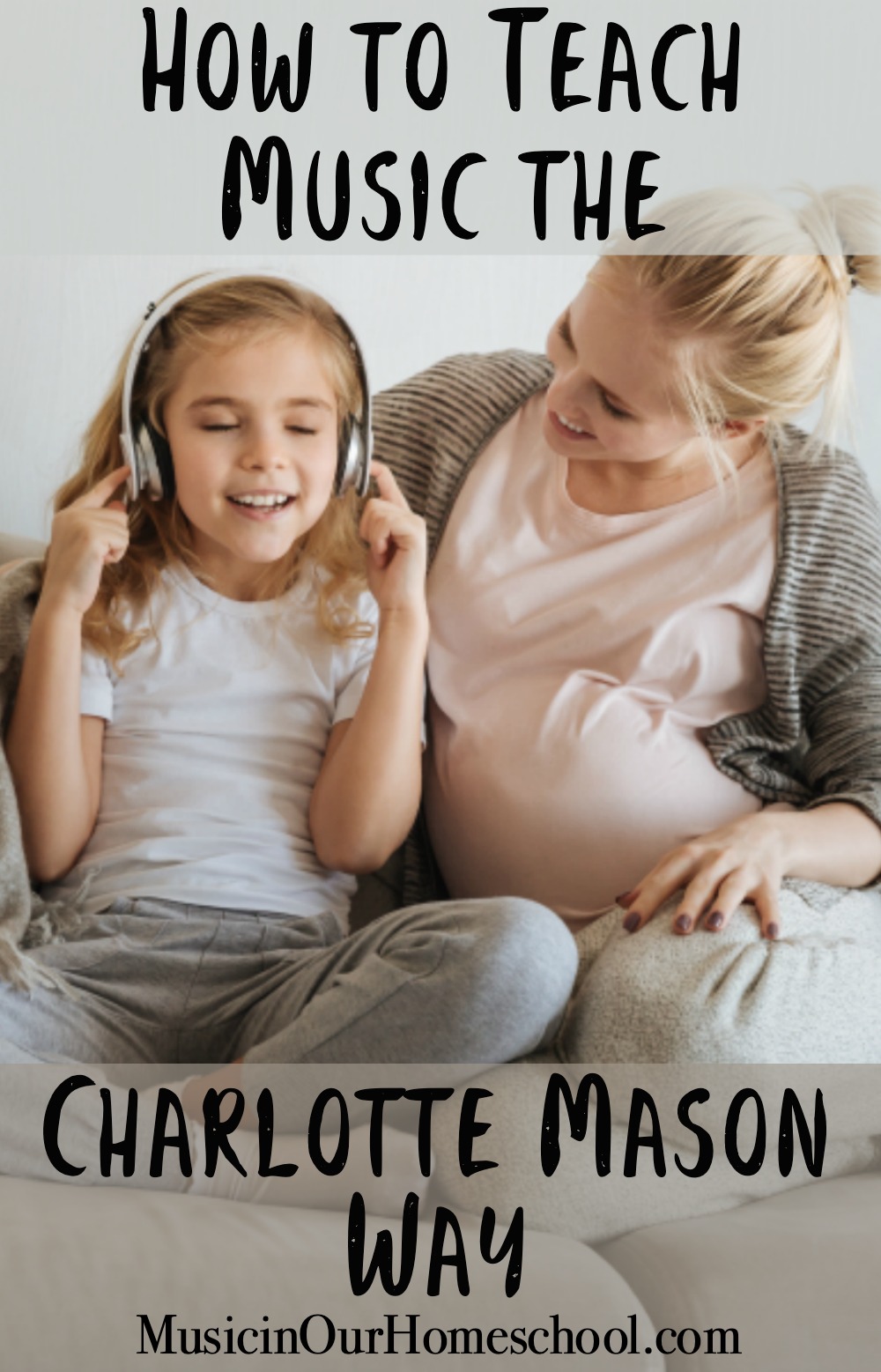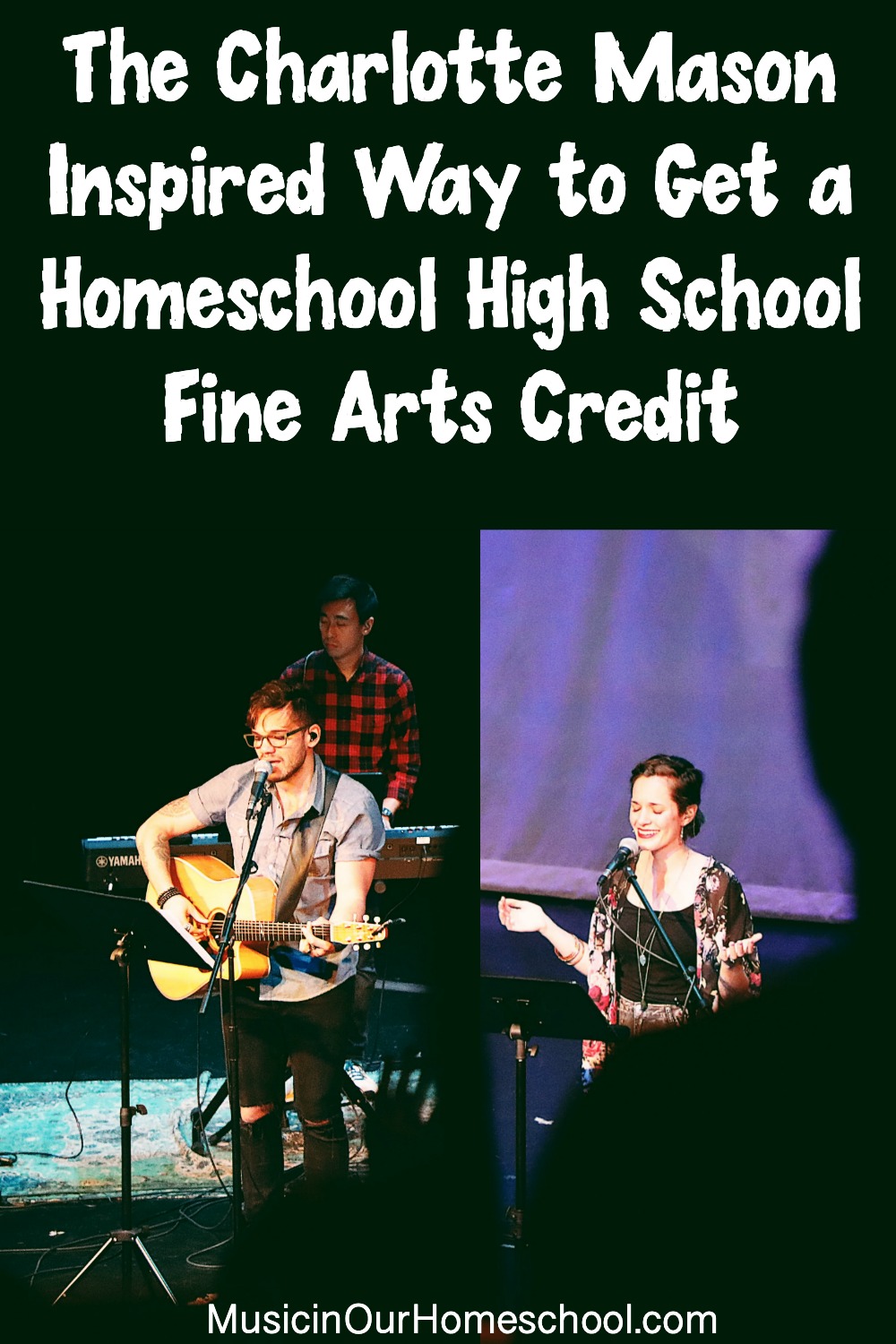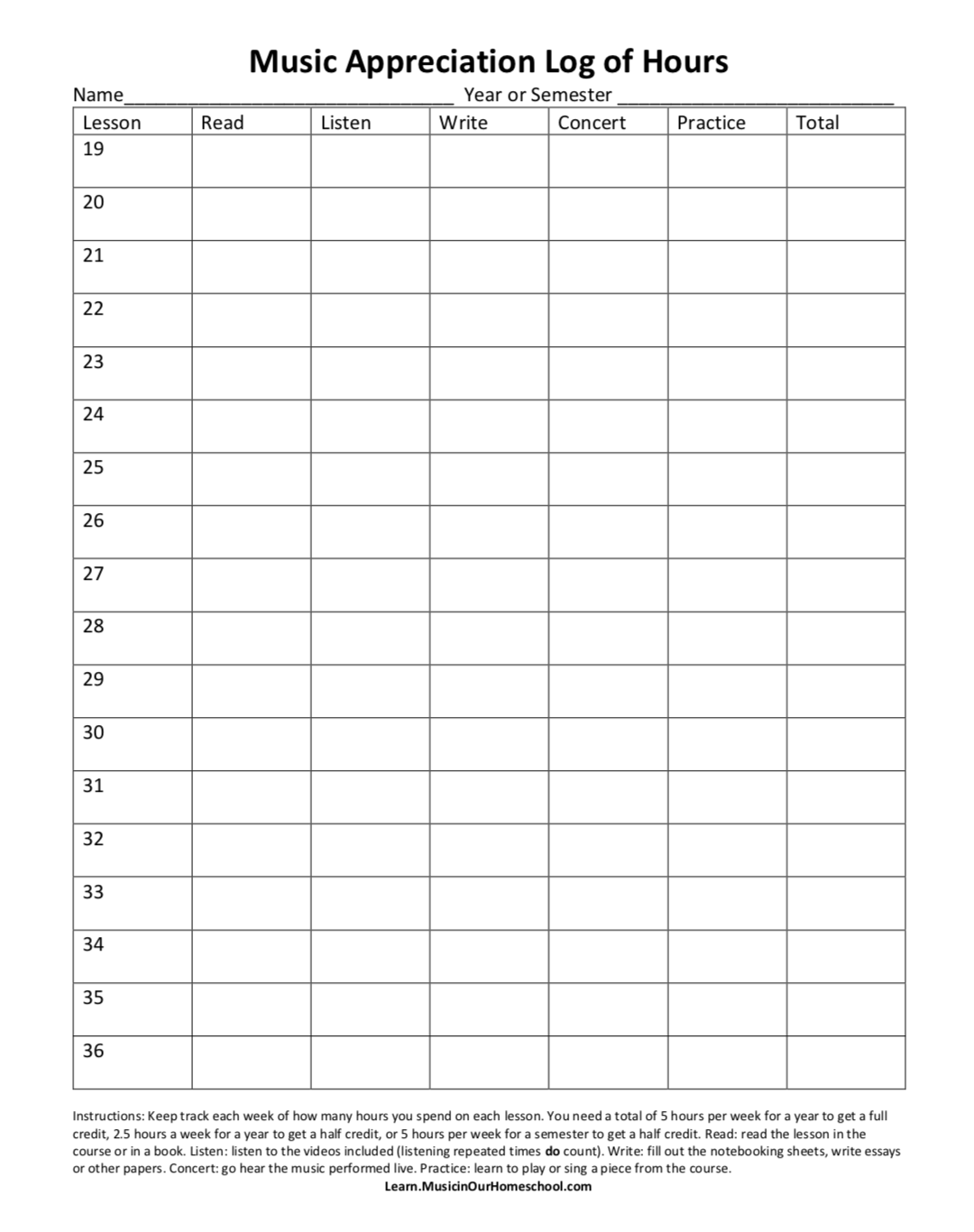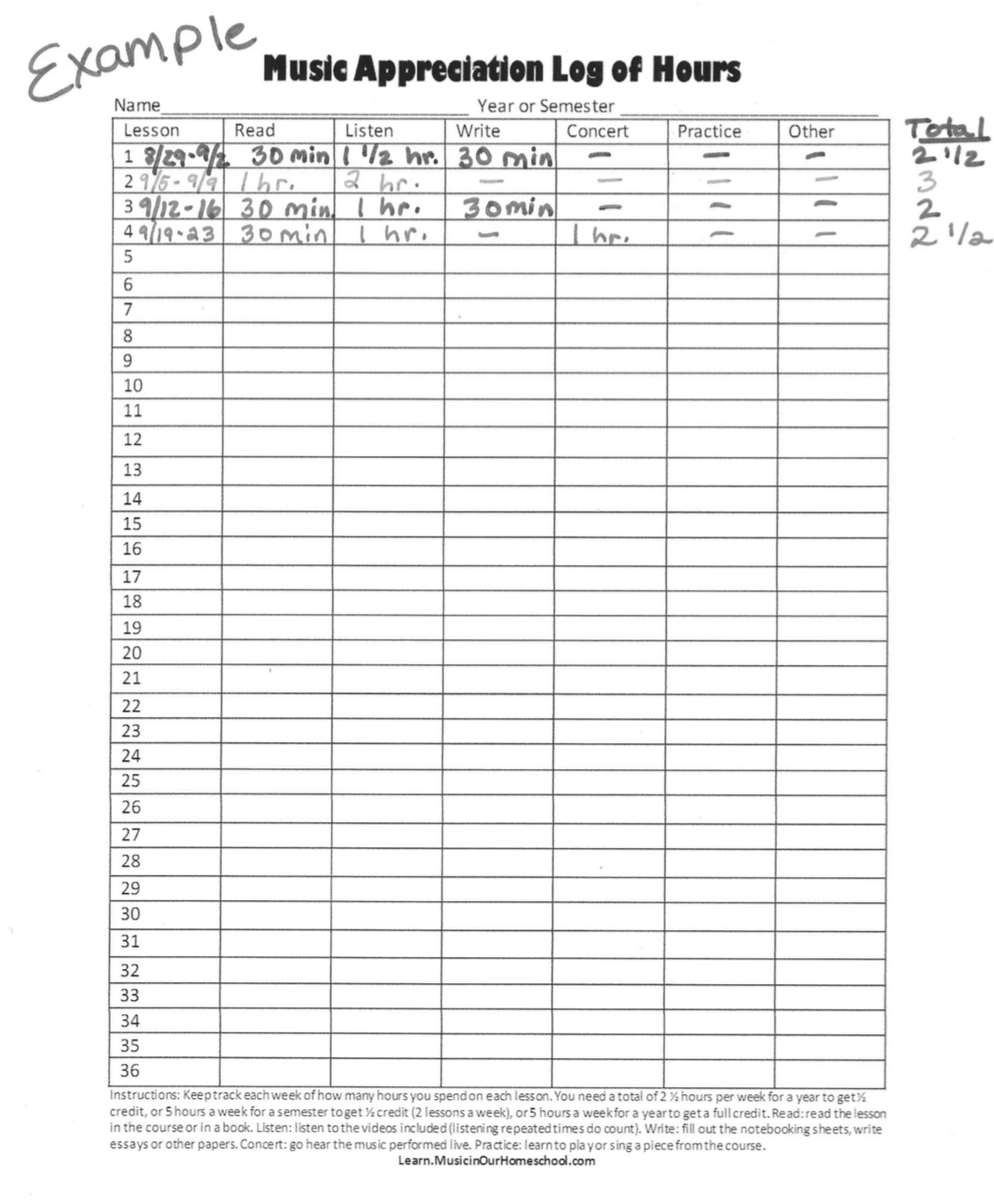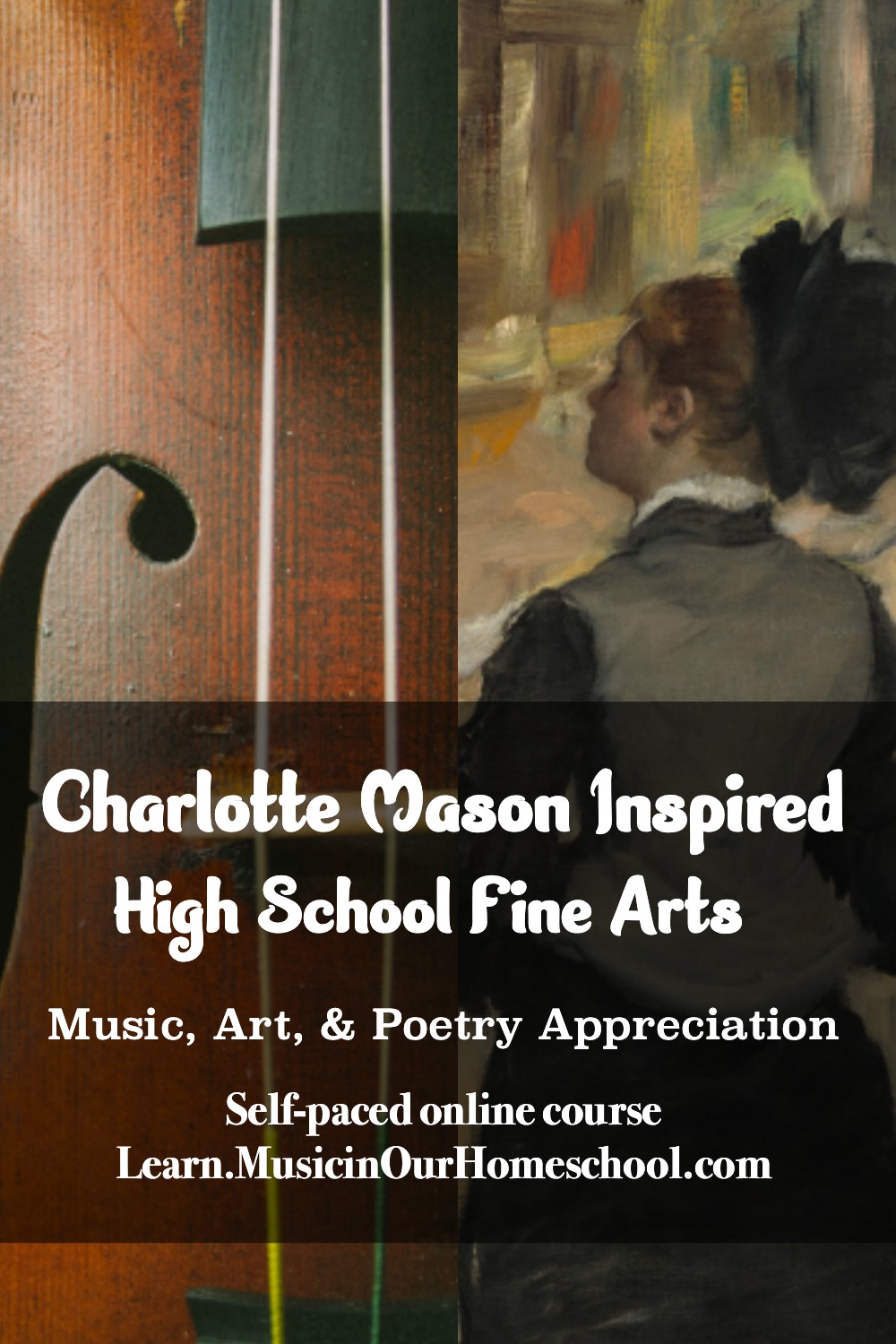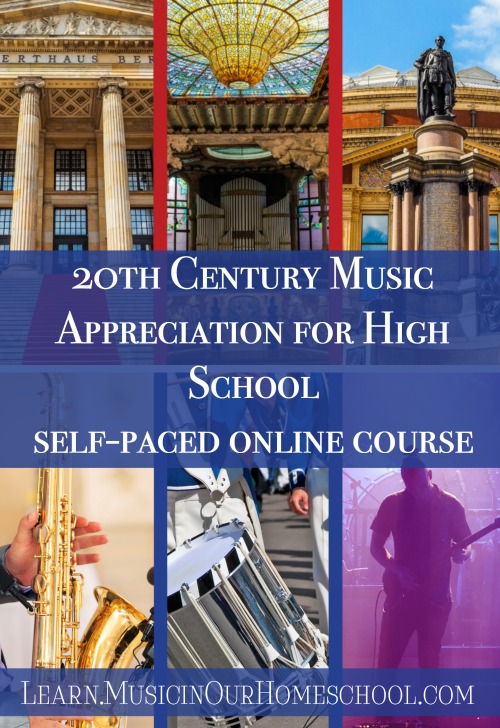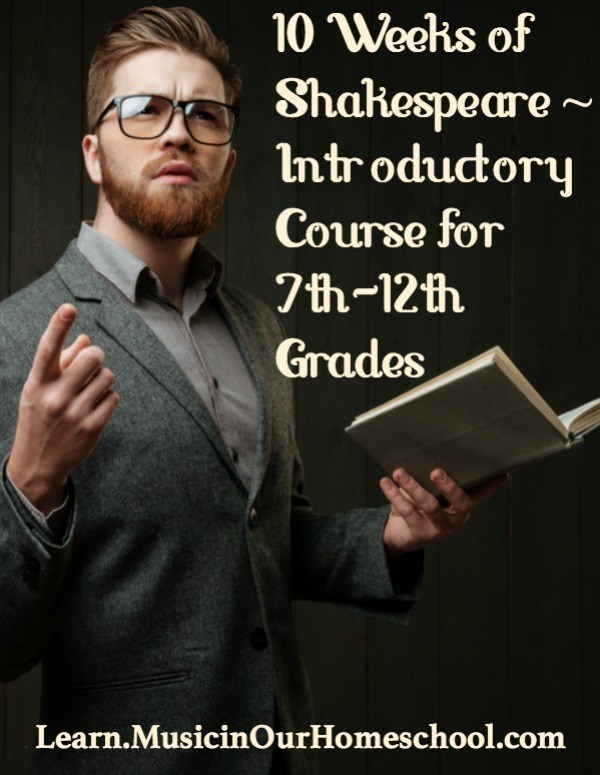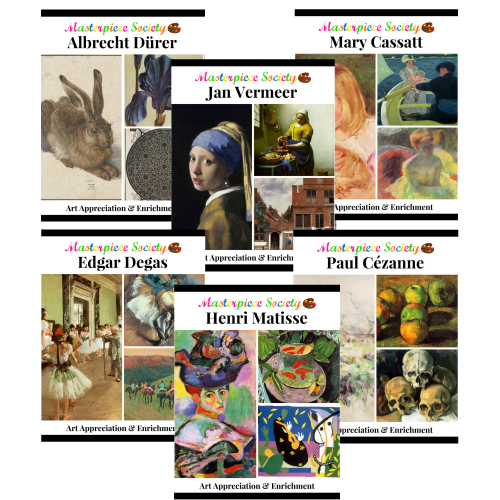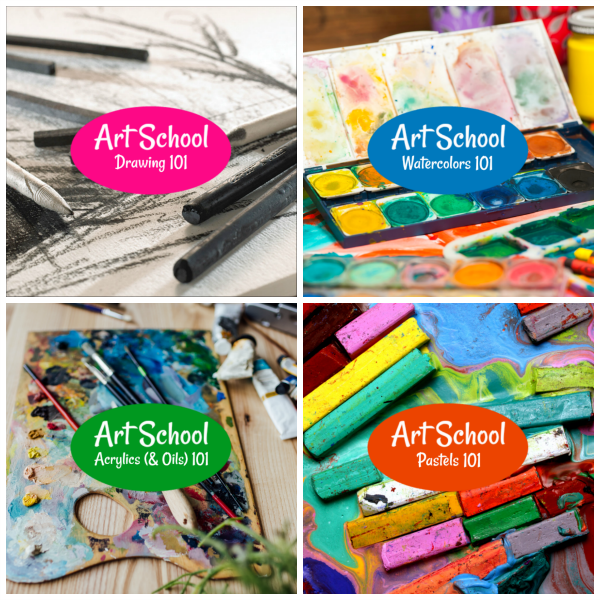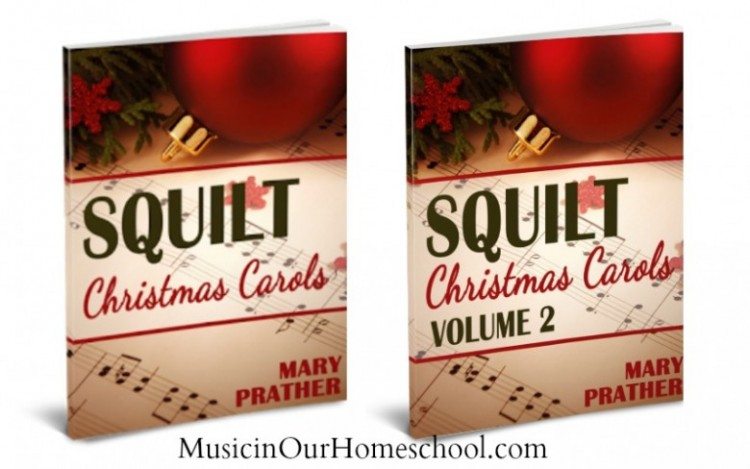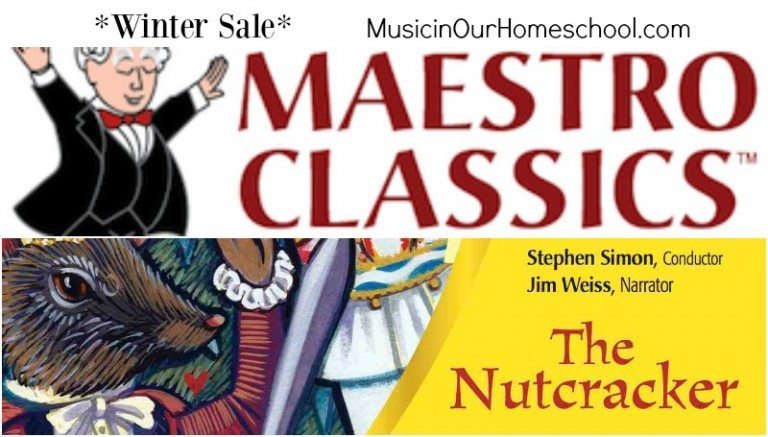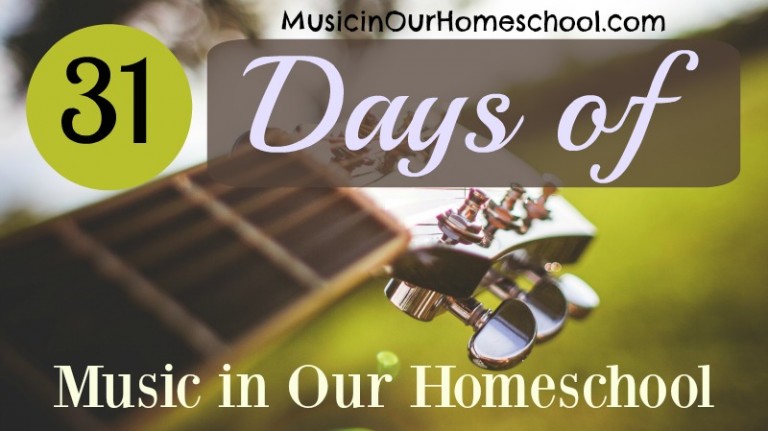The Charlotte Mason Inspired Way to Get a Homeschool High School Fine Arts Credit
Today we’ll be talking about the Charlotte Mason Inspired Way to Get a Homeschool High School Fine Arts Credit. I’ll be explaining what a fine arts credit is, why every student should get a fine arts credit regardless of what they’re planning to do after high school graduation, and how to do it the Charlotte Mason inspired way!
Who am I?
I thought I’d start with an introduction for those of you who aren’t familiar with me. My name is Gena Mayo, and I’ve been married for almost 23 years. I have 8 children who are ages 19 down to 8. Two have graduated high school and completed their first year of college. I have always homeschooled all my kids (except my oldest who did his last 3 years of high school at a public school).
I am also a music teacher. After earning a bachelor’s of music education degree from Baylor University I received a masters’s degree in vocal pedagogy (how to teach voice lessons) and an early childhood music and movement certification from Musikgarten. I taught for 5 years in the public school system (junior high choir and elementary general music) before I had my first child.
After becoming a mom, I taught Musikgarten “mommy and me” classes out of my home and eventually at our homeschool co-op, and other music education such as private and group voice lessons, musical theater classes, and music appreciation classes. One of my favorite ways to teach music is as a musical director for full-length musicals, which I’ve done every year for the past 6 years.
I began the website Music in Our Homeschool as a way to encourage and equip all homeschoolers to include music in their homeschool. My online course site Learn.MusicinOurHomeschool provides super easy-to-use, click-and-go music lessons for students of all ages (preschool through adult). See a free Sampler Course with 25 free lessons here.
Disclosure: I get commissions for purchases made through affiliate links in this post.
Charlotte Mason Inspired
I learned about the Charlotte Mason method of education before I began homeschooling my first child through the books For the Children’s Sake by Susan Schaeffer Macaulay and A Charlotte Mason Companion by Karen Andreola. And, although I am not a purist, our homeschool has always been Charlotte Mason inspired!
In 2019 I did a workshop for the 2019 Charlotte Mason Online Conference and wrote a blog post called “How to Teach Music the Charlotte Mason Way” where I discussed 6 different aspects of a Charlotte Mason inspired music education.
Those 6 aspects are:
- Composer Study
- Hymn Study
- Folk Song Study
- Musical Creativity
- Dancing
- Living Books About Music
See that post for more details about these aspects.
What a Fine Arts Credit Is
So, let’s get into the meat of this workshop. Fine Arts is a type of elective class a student takes in high school, including in a homeschool high school. Let’s start out by defining “Fine Arts.”
Fine Arts as defined by arteducators.org is the following:
“The performing and visual arts, generally referred to as the fine arts, are unique and important in the school curriculum.”
“For purposes of developing this curricular area, we define the fine arts as consisting of the visual arts, dance, music, and theatre.”
“Although certain of the language arts may fall within a broad definition of art, they receive sufficient attention in the school curriculum through their inclusion in language courses.”
“All other courses, such as practical arts that include the word ‘art’ in their titles, serve different educational purposes, and they should not be considered as a part of the fine arts.”
That is certainly one way to look at it. But, many others in the education realm have differing definitions. I will at this point encourage you to research your own state’s (or country’s) individual laws regarding graduation requirements. Some states require Fine Arts and have a specific definition of what to include. Others don’t, so you have more freedom on how you will create your Fine Arts class for your student.
Examples of subjects or activities that could be included in your Homeschool High School Fine Arts credit class:
I love that Homeschool High School Fine Arts can cover such a wide variety of disciplines. This means that if you have a student who may be REALLY averse to some of these, he or she might be excited about others!
- Art lessons
- Voice lessons
- Piano, guitar, or any other instrument lessons
- Church praise band or vocal group
- Choir
- Band
- Orchestra
- Music Ensemble (such as barbershop quartet, jazz ensemble, string quartet, or garage band)
- Any dance lessons such as ballet, jazz, tap, ballroom, or praise dance.
- Drama productions
- Drama camp
- Filmmaking
- Playing in or attending classical music concerts
- Attending ballets, operas, plays, or musicals
- Visiting art museums, art galleries, and local art fairs
- Music theory class
- Music appreciation or music history class
- Art appreciation or art history class
- Music recording and producing
- Virtual choir participation
- Photography
- Drawing, painting, pottery, leatherworking, jewelry-making, ceramics, printmaking, and sculpting
- Reading about and studying artists, composers, musicians, dancers, and actors
- Video production
- Script-writing, play-writing, or screen-writing
- Audio editing
- Poetry study and poetry recitation
- 3-D design
- Graphic art
- Animation
- Songwriting and music composition
- Acting and pantomime
- Musical theater class and/or performance
- Technical theater and stagecraft
- Improvisation (in theater, music, or dance)
- Puppetry
- Fashion design including costume history
- Textile and fiber arts
- Architecture history and design
So, you’ve probably noticed that I included way more disciplines and ideas in this list than the previous definition above included.
How to Determine Credits in High School
It’s important to not “count” a class twice. For example, you’ll have to decide if your Ballet Class will be your Fine Arts credit or your Physical Education credit. It can’t be both. Another example: is Poetry Study going to be part of your Fine Arts credit or your English literature credit?
Furthermore, decide if you are counting this activity as an elective or an extracurricular activity? Again, it can’t be both. For example, you might want to list praise band at church as an extracurricular activity on their high school transcript instead of as part of a class. You get to decide. And, yes, it is allowed that it can be one thing one year, and another the next year. Read more about elective vs. extracurricular here.
A full credit class contains 120-180 hours of work (or 60-90 hours for a half-credit course). Why not an exact number of hours? Well, that would make it too easy for us, right? To research further, see here: Carnegie unit.
Personally, I tend to push for the upper level of hours for my own students since I think of classes this way. A school-year in the United States is typically thought of as 36 weeks. Students go to school 5 days a week and are in a high school class about an hour a day. So, 5 hours x 36 weeks = 180 hours. However, we also know that that is the absolute maximum time. Rarely do public school or private school students actually do a full hour per class for all 5 days a week for a full 36 weeks during a school year.
If you are creating your own class, log the hours you work on it and keep it as “proof”. If your class is from a high-school level textbook or a high-school level online course or a high-school level in-person class, you generally don’t need to log hours, unless you’re using that class as only just a part of your full fine arts credit. For example, one year my son took a singing class that met for a couple of hours a week for 20 weeks. He was also taking private voice lessons and practicing a lot a home. So, I was able to add that outside class to his voice lessons to equal a full fine arts credit.
How to Log Hours for your Homeschool High School Fine Arts Class
Logging hours is very simple to do. The student just needs to pick a method, stick to it, and log every single time they work on the class. Here are a few ideas of where to log in their hours:
- A spreadsheet app on their phone
- A spreadsheet on the computer
- Spiral notebook
- Student high school homeschool planners often have a place in them to keep track
- Simple notebooking page like this:
What to Include on your Logging Hours Sheet
What should the student do during their Fine Arts class?
Have you ever heard of Bloom’s Taxonomy? It’s a classification system that expresses and explains different levels of human cognition, such as thinking, learning, understanding, analyzing, and evaluating.
The “verbs” listed on the chart below cover a wide range of thinking skills and can provide hands-on ideas and other inspiration for your actual learning.
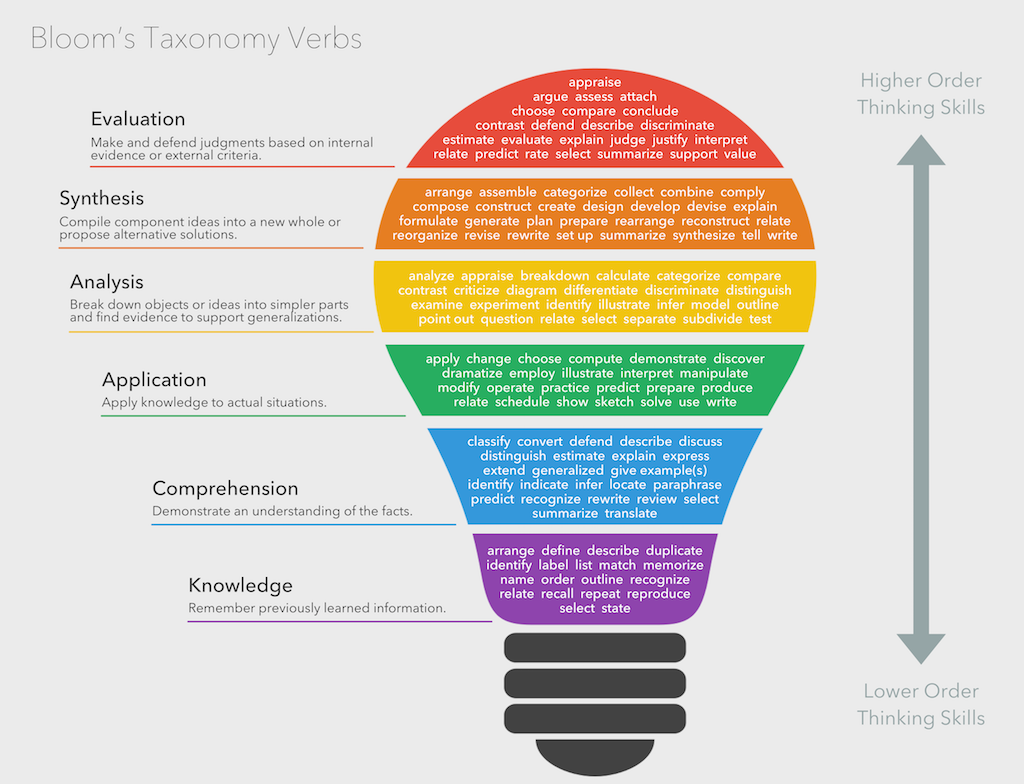
Using the taxonomy chart above, you can come up with a list of activities for your Fine Arts course like this:
- Read a music appreciation book (such as The Gift of Music) or an art appreciation book along with your course to learn even more about the styles and the composers or artists.
- Teach or narrate what you have learned to a parent, sibling, or friend.
- Read/Recite the Poem out loud. Film yourself dramatizing it. Memorize it!
- Write a 5-paragraph essay, a compare/contrast essay, or a descriptive essay every week based on the lessons studied.
- Write a research paper based on a topic studied in the course
- Compose a poem based on the style or form you studied in the course.
- Give a speech, using one of the essays or your research paper as a basis. Include a multi-media presentation, such as with Google Slides, if desired.
- Go to a concert, recital, opera, or musical to hear one of the composers or pieces studied in the course.
- Learn to play or sing something from the course.
- Explore an art museum or art gallery to see art, hopefully from one of the artists you studied!
- Compose a musical piece or create a piece of art based on a style you studied in the course.
Let that list just get you started. There is so much more you could do!
Why Every Student Should Get a Fine Arts Credit
You might think I’m biased since I’m a music teacher, and it’s in my blood, but I do think that EVERY homeschooled high school student should get a fine arts credit.
Yes, I know every student is different. They all have different goals for after high school. Some will be heading to college. Others to a vocational school, then a job. Others to the military. And, others straight to marriage and family life.
Some students have special needs. Some are highly gifted.
These considerations all make a difference in choosing the high school courses a student will take when you’re planning out their four years of high school. Let me encourage you to consider, however, that no matter what your student’s goals or giftings are, all high schoolers should get a fine arts credit.
The fine arts tend to tie together the disciplines of history and culture. So, a course in fine arts helps your student develop an integrated understanding of people and culture. If the student is learning some music or art history, it’s fascinating to see how the arts and culture influence one another during each historical period.
Furthermore, have you noticed the many references to classical music and composers in books, movies, etc.? Studying music history or music appreciation will also help your high schooler understand the integration of these various art forms.
And, here is one more reason to get a fine arts credit. It can be really fun and easy! I’m not offended at all to think of a Fine Arts class as any “Easy A” type of class. We don’t want our kids to only to be taking hard courses such as British Literature, Pre-Calculus, Foreign Language, and Physics during high school. Give them a breath of fresh air with a Fine Arts course!
Homeschool High School Fine Arts the Charlotte Mason Inspired Way
As I have discussed already, you can plan out a Fine Arts course in so many different ways. Let your high schooler even help plan it out for himself!
However, if you aren’t interested in doing that, I did create a Charlotte Mason Inspired Fine Arts course that will require no planning on the teacher or student’s part. Each lesson has three parts to it: music appreciation, art appreciation, and poetry appreciation. Simply, read the included lessons, watch the embedded videos, and work on the notebooking pages. Keep all your notebooking pages in a 3-ring Fine Arts Binder and log your hours!
I used the following five aspects of the Charlotte Mason method as the basis of the Charlotte Mason High School Fine Arts online course.
- Attention to detail ~ looking intently and analyzing something being studied.
- Narration ~ speaking or writing about what was learned.
- Recitation ~ Speaking aloud the poems.
- Composer/Artist/Poet Study ~ spending an extended period of time just on one composer, one artist, or one poet at a time in order to really recognize and hopefully understand his or her style.
- Living Books ~ biographies are great for studying Fine Arts. (Don’t use a boring textbook.)
With the Charlotte Mason Inspired High School Fine Arts online course, your high schooler will earn a full credit in Homeschool High School Fine Arts! Study music appreciation, art appreciation, and poetry appreciation in this Charlotte Mason inspired self-paced online course!
What makes this course “Charlotte Mason Inspired?”
Charlotte Mason said:
“It is a pity that we like our music as our pictures and our poetry mixed so that there are few opportunities of going through as a listener a course of the works of a single composer . . . Let young people study as far as possible under one master until they have received some of this teaching and know its style.”
So, what I have done with this course is to create a way for the student to study only one composer, one artist, and one poet per month. They will have the opportunity to “study as far as possible under one master” by listening to about 4 hours worth of music, studying 6-8 pieces of art, and reading/studying 7 or 8 poems from each master.
There are 9 months’ worth of lessons, and each month features a new composer, artist, and poet from all eras of history (Renaissance, Baroque, Classical, Romantic, Impressionistic, and Modern eras).
Composers studied:
- Giovanni Pierluigi da Palestrina
- George Frideric Handel
- Antonio Vivaldi
- Franz Josef Haydn
- Ludwig van Beethoven
- Frédéric Chopin
- Gioachino Rossini
- Claude Debussy
- Aaron Copland
Artists studied:
- Sandro Botticelli
- Rembrandt Harmenszoon van Rijn
- Diego Rodríguez de Silva y Velázquez
- Antonio Canova
- Jacques-Louis David
- Francisco de Goya
- Eugène Delacroix
- Edgar Degas
- Grandma Moses
Poets studied:
- William Shakespeare
- John Milton
- Jean de La Fontaine
- Phillis Wheatley
- Robert Burns
- John Keats
- Edgar Allen Poe
- Stéphane Mallarmé
- Maya Angelou
**Note: These composers, artists, and poets are all a part of the Western tradition (Europe and America). Watch for a future course with composers, artists, and poets from other areas of the world!
Other Options for a Homeschool High School Fine Arts Credit Course:
If you’d like to focus on just music appreciation for your fine arts credit, I have also created three self-paced online courses for high schoolers. The very best composers are included, along with an interesting biography and wonderful videos of their music.
- Music Appreciation: Middle Ages through Classical Period (450-1799)
- Music Appreciation of the Romantic Era (1800s)
- 20th Century Music Appreciation (1900-modern times)
Q&A about Homeschool High School Fine Arts from Homeschool Moms
- What all can count as fine arts? Is this making art or art appreciation, etc.?
- Another question asked was: How do you define different art courses for credits? For example a drawing course vs artist study.
Yes! Making art and studying art appreciation can both count as Fine Arts!
Maybe the student spent 90 hours on just learning to draw and creating her drawings. You could call that a Drawing class and give it a half-credit. If a student worked all year on a variety of art creating such as sculpture, sketching, painting, drawing, and printmaking, then you could call it an Art class and give it a full credit. Or, if the student spent a semester studying art appreciation through picture study, then you can call it an Art Appreciation class and give it a half-credit.
On the other hand, if you have a wide variety of activities (for example, 50 hours of piano lessons, 50 hours of working on a drawing course, 50 hours of artist study, and 20 hours of composer study), then it all can be added together and called a Fine Arts class for a full credit.
- What advice would you give moms of middle school children that can help prepare them better for HS years as we implement living books as part of their education as opposed to set curriculum?
Include composer study, picture (artist) study, and poetry reading from the very beginning! Read living book biographies of the great composers, artists, and poets. See my “Best Composers to Study” list below for guidance or check out the courses at Learn.MusicinOurHomeschool.com.
- I need “fine arts for logical thinkers.” My boys are anti anything artsy or musical or drama-ish so I need to make it look not so fluffy. Music is Math, type things!!
Here are a couple of ideas.
I wrote an Intro to Shakespeare class for my homeschool co-op called 10 Weeks of Shakespeare: Introductory Course for 7th – 12th Grades that incorporates a super fun book/script called William Shakespeare’s Star Wars. The description of the book says, “Experience the Star Wars saga reimagined as an Elizabethan drama penned by William Shakespeare himself, complete with authentic meter and verse, and theatrical monologues and dialogue by everyone from Darth Vader to R2D2.” My students, none of whom were really excited about studying Shakespeare, had a lot of fun with this class where we acted out a scene together and watched an online performance of A Midsummer Night’s Dream.
Another idea is to look at the computer-driven fine arts ideas from the list above, such as video and audio production and editing, animation, and 3-D design. One of my sons who is now studying mechanical engineering in college really enjoyed working on graphic design and photography when he was in high school. Hopefully, your boys will see something on the list that excites them!
- Should we be considering adding college-level fine art courses for those that want to go into fine arts?
Yes, absolutely! If your student wants to pursue a degree in college, no matter what it is, start a class during high school that will complement that course study. For example, take AP Art History in high school if the student wants to go to art school. Take AP Music Theory if they want to be a music major. Perform in plays and musicals if they want to be a theater major.
- Question about Portfolio prep – how to go about finding help in that area as they prepare for interviews and portfolio reviews (assuming they want to pursue a fine arts degree)?
For those who aren’t aware of what a portfolio is, let me start there. It’s basically a sampling of your work. So, an artist might have a portfolio that contains some paintings, drawings, and sketches. A musician or actor might have a digital portfolio that contains video and audio recordings of performances.
I would first contact the colleges or art schools you’re interested in going to and getting their specific advice. Also, ask students (and their moms) who have recently started in these schools what they did that they felt worked well for them and what they would have done differently.
- How do I or can I count classes I am paying for outside of the home in theatre arts? I have a son taking pretty challenging acting classes as well as performing via his acting conservatory.
Log every hour! You might have multiple classes you can count. For example, many of my high schoolers have participated in our local musical theater organization. They take a class every week during the school year and do as many as three full-scale musicals a year. I have been able to count this work as both Theater Arts (which is a specific Fine Arts elective credit) and Dance (a Physical Education credit) because there were enough hours involved that didn’t overlap. (In other words, I didn’t count the same work for both the Fine Arts and P.E. credits.) Depending on how much time your son spends on his classes and practicing, you might have enough hours to count it as 2 full credits a year.
- I’m getting ready to put my upcoming 9th grader’s high school curriculum together, and this is a hard area for me because my daughter has zero interest in anything that from what I researched is even considered fine arts!! I’m at a loss….I feel overwhelmed with this whole high school phase! What do I even do?
Sometimes, we as the homeschool teacher have to make our kids do something they don’t particularly want to do. Does my daughter with dyslexia who aspires to be a nail tech want to take Algebra? No. Does my son who loves all things computer coding want to read a Shakespeare play? No. Will I still make them do it? Yes.
If your state doesn’t require something, you can decide whether to include it or not in your daughter’s high school curriculum. However, I would encourage you to make sure her education is fully rounded out. Have her look at the Fine Arts list above and see if something sparks her interest. If not, have her pick something anyway! 🙂
- I just looked at our state’s requirements & Fine Arts aren’t specifically required. However, I’m raising a girl who loves art, especially drawing. She doesn’t enjoy learning about art though! She’s got a true artist’s spirit & likes to create under her own inspiration without a lot of ‘rules” and suggestions. I have had her use Artistic Pursuits, however & it’s been fine. Other Fine Arts can get kind of pricey when buying curriculum, equipment & classes (ie Pottery) Wondering if you have any tips for creating an Art Rich high school plan without breaking the bank.
Oh, my, this is a hard one! Applied arts (private music lessons, art lessons and supplies for creating art, dance lessons, and theater lessons) can certainly be pricey because often the student is studying under a master teacher. There is always a variety, though. I would search online for a teacher or class that fits your price range.
I would also still encourage her to study great artists of the past. It will help her understand her own art better if she knows how others created theirs. If she pursues art in college, art history will be required. It would be helpful for her not to be starting from square one at that point.
Resources for Your Homeschool High School Fine Arts Credit:
- Charlotte Mason Inspired High School Fine Arts Course (with composer study, picture study, and poetry study)
- Living books such as 100 Great Operas and Their Stories and The Gift of Music,
- Music Appreciation courses such as Music Appreciation: Middle Ages Thru Classical Era for High School online course, Music Appreciation of the Romantic Era for High School online course, 20th Century Music Appreciation for High School online course
- 10 Weeks of Shakespeare: Introductory Course for 7th – 12th Grades
- Free Art History course at Khan Academy
- Art Appreciation with Alisha Gratehouse of Masterpiece Society. (She also has applied art lessons for students of all ages.)
Who are the Best Composers to Study?
I have compiled a comprehensive list of 86 composers, broken down into the 5 musical eras: Middle Ages, Renaissance, Classical, Romantic, and Modern.
The list can be used by all ages, Pre-K through High School. Even adults can take the list and use it to listen to some composers they have never listened to before!
There is a blank beside each composer’s name, so you can make a note–maybe the date you studied him, or your favorite piece.
Download the free printable of
“Wh0 are the Best Composers to Study?” below.
Homeschool High School Fine Arts Related Posts:
- 15 Must-See Movie Musicals for High School Students
- Hymns and Creeds, Literature Guide from 7 SistersHomeschool
- 10 Tips for Homeschoolers to be Successful in Musical Theater
- “Me? Teach Shakespeare? Then it has to be easy.”
- Why I Want My Kids to Experience Shakespeare
- 18 Amazing Resources for Teaching Shakespeare to Your Kids
- 15-Minute Music Lesson on Music Inspired By Shakespeare
The 5th Annual Charlotte Mason Inspired online homeschool conference
I’m speaking! Sign up here.
